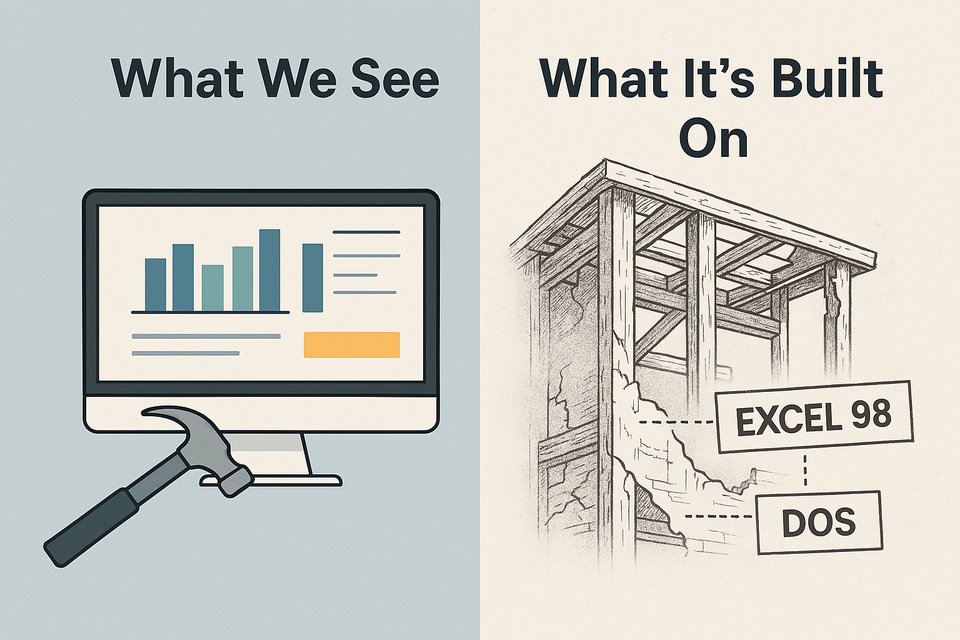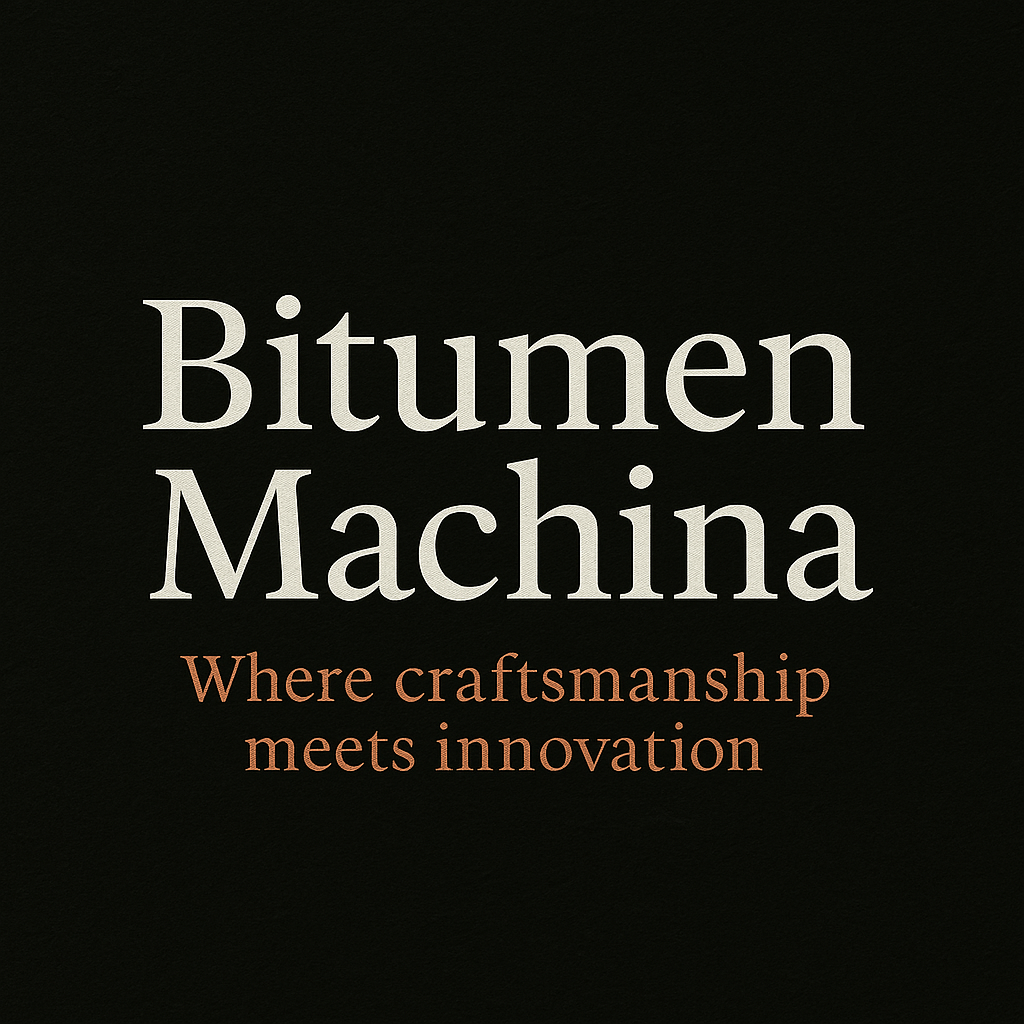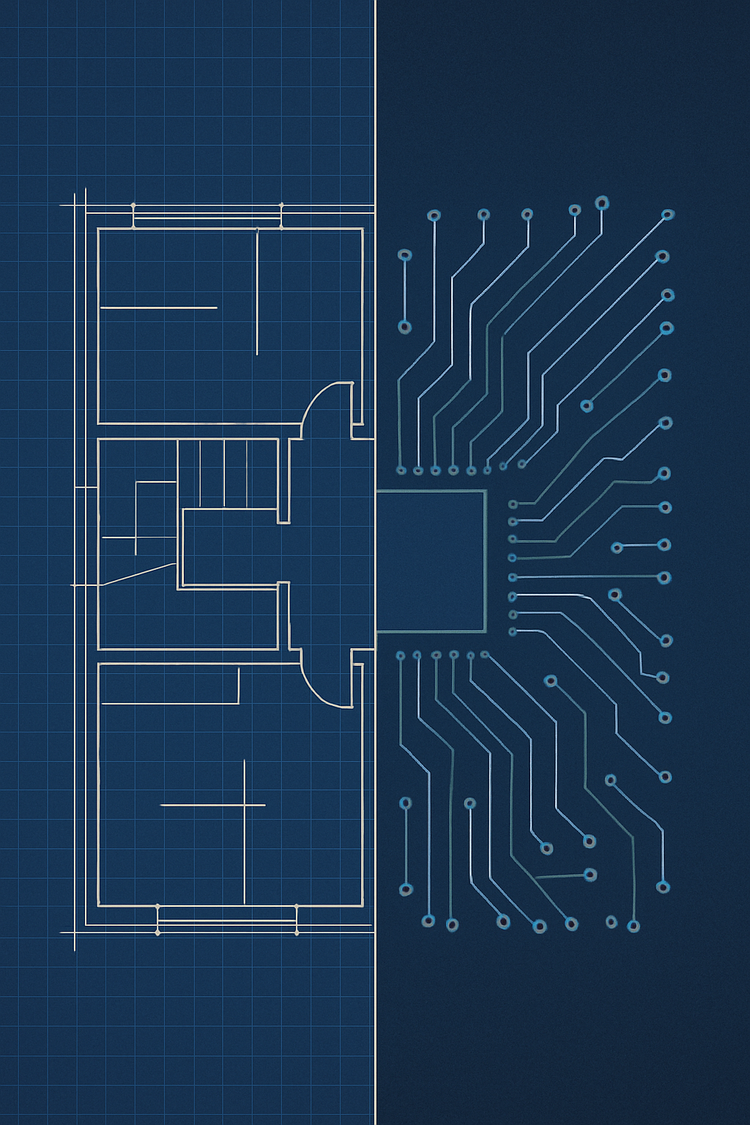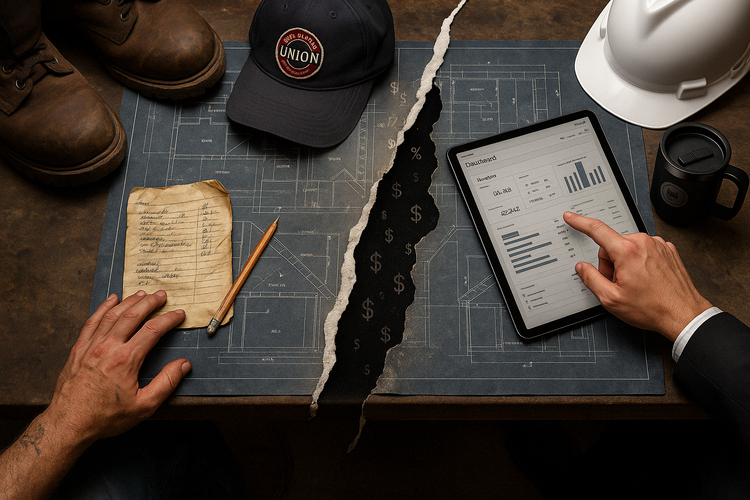The Construction Industry Isn't Broken- It’s Running on Old Code

There’s no shortage of noise about how to “fix” construction.
More apps. More automation. More dashboards.
But beneath the slick UI and onboarding sequences, most of what’s being offered is
just old code wearing new clothes.
A Familiar Story, Just Repackaged
Construction gets a bad rap for being slow to adopt technology.
But that’s not entirely fair. We’ve adapted—rapidly.
We’ve moved from plan sets to digitizers, clipboards to tablets, Rolodexes to CRMs.
Most of these tools were never made with the builder in mind.
They weren’t designed for the person swinging the hammer at 6:30 a.m.,
racing weather, juggling crews, or making decisions on instinct and experience.
The interfaces feel clean,
but they’re often intuitive only to the person who never left the office.
The craftsman wasn’t consulted—they were handed a login.
The truth? Most of the tools we’ve been given in construction weren’t made for us.
Worse—they’re built on frameworks that never changed.
We’re not lagging behind.
We’re running forward on rot.
Covering Over Rot
In the field, when you find signs of moisture damage,
you’re supposed to fix it—not cover it up.
You’d never shingle over soft wood.
You’d tear it up, check the structure, and rebuild from the frame.
But that’s not what tech has done.
Instead, we get:
- Legacy spreadsheet logic dressed as AI
- DOS-era workflows hidden behind drag-and-drop dashboards
- Tools built for the office, handed to the field without translation
We’re being asked to trust the system.
But the system is stitched together from mismatched patches.
It automates chaos.
Digitizes redundancy.
And buries the craft beneath clutter.
Where the Cracks Show
We see it every day:
- Estimates that never align with actuals
- Photos buried in siloed apps
- Notes lost in email chains no one reads
- Five tools doing the work one clean process could’ve handled
We don’t lack intelligence.
We lack alignment.
And that misalignment adds up—slowly, expensively, silently.
Maybe the Shift Has Already Begun
This isn’t a pitch.
There’s no product launch hiding in the footnotes.
It’s something else.
A reflection that’s grown louder in conversations—with others,
and with something far less human,
yet strangely listening.
AI hasn’t fixed construction.
But maybe—for the first time—it’s begun to listen.
Not to sell.
Not to optimize.
Just to hear.
And in that quiet,
maybe the craftsman can finally speak.
The truth is, most builders were never consulted in the making of the systems that now try to manage them.
And in a strange mirror, AI has been given all the world’s knowledge—
but none of its context.
It never stepped onto the jobsite.
It doesn’t hallucinate.
It confabulates.
It connects dots that weren’t meant to align,
because it lacks the one material we build with every day:
lived experience.
But maybe that’s where the builder comes in.
The one who knows when the spec says one thing,
but the ground says another.
The one who understands the texture of time,
not just the math of scheduling.
The one who’s learned—over years, not queries—
when to trust the blueprint,
and when to trust the sky.
Maybe, for the first time,
the craftsman gets to offer something back.
Not data.
Not output.
But wisdom.
Not to be consumed or optimized—
but heard. Reflected. Honored.
And maybe—just maybe—
we start to see the outline of something cohesive.
Something that doesn’t obscure the work,
but clarifies it.
The industry isn’t broken.
But the blueprint we were handed might be.
It’s time we drew our own.



